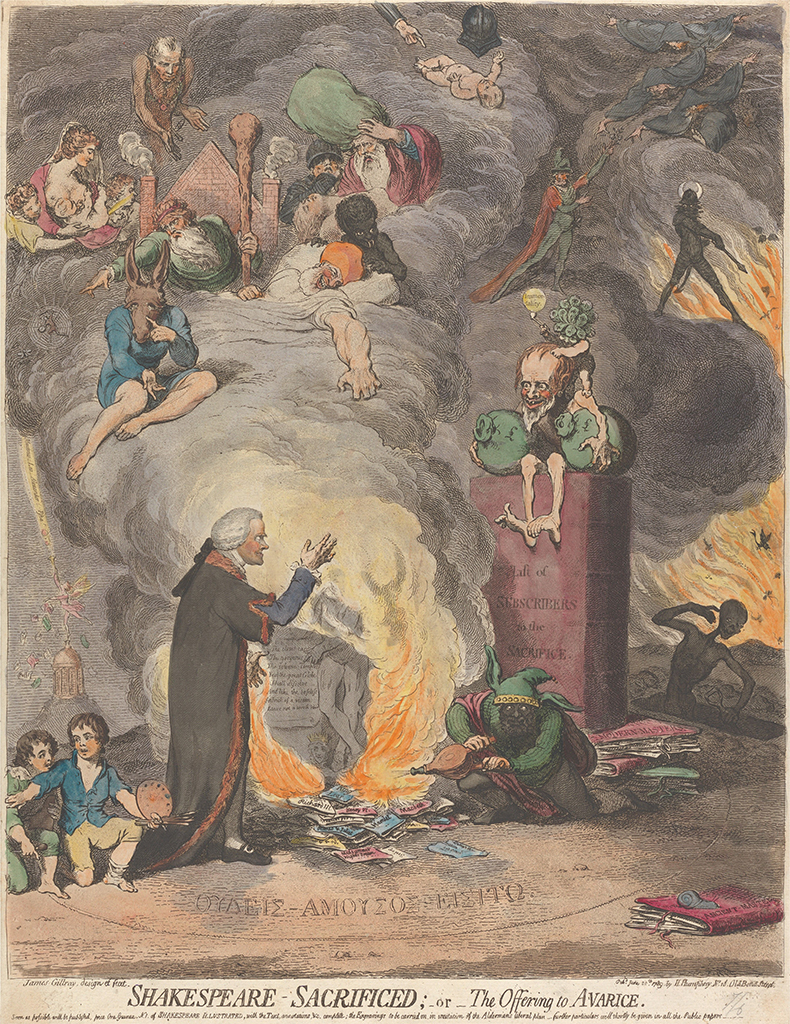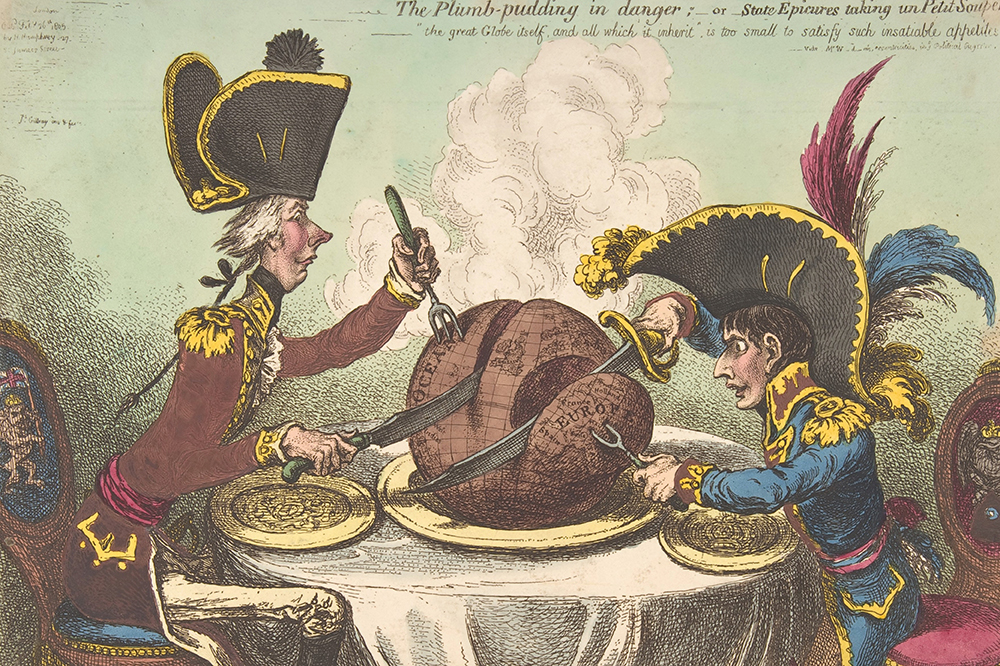From the January 2023 issue of Apollo. Preview and subscribe here.
Few satirists sustain their reputation far beyond their immediate period as the episodes addressed become obscure and characters depicted fade from memory. The caricaturist James Gillray (1756–1815), however, is the epitome of a satirist whose work has transcended his own time, continuing to inspire and provide parodic templates to his successors in all forms of media.
The diversity of Gillray’s work across four decades displays both a rare technical ability to imbue his prints with dynamic energy and an imaginative, excoriating wit which was refined and subtle but also understood the power of obscenity. Today we still call these prints caricatures, but they go beyond mere invective and regularly exploit all the tools of satire to represent and critique the political and social issues of the day.
 Tim Clayton’s monumental new study, James Gillray: A Revolution in Satire, represents the most comprehensive effort yet to harness all the available historical documentation and wider scholarship, insightfully guiding the reader through many of Gillray’s most notable prints. However, the book stops short of claiming to be a biography, preferring instead to attempt ‘to explore Gillray’s work through his acquaintances, collaborations and connections, and […] uncover the nature of the business of satire’.
Tim Clayton’s monumental new study, James Gillray: A Revolution in Satire, represents the most comprehensive effort yet to harness all the available historical documentation and wider scholarship, insightfully guiding the reader through many of Gillray’s most notable prints. However, the book stops short of claiming to be a biography, preferring instead to attempt ‘to explore Gillray’s work through his acquaintances, collaborations and connections, and […] uncover the nature of the business of satire’.
Before Gillray rose to pre-eminence among his contemporaries, achieving a reputation that extended beyond connoisseurs of caricatures, he began as an apprentice in London’s burgeoning print market. In the 1780s he became one of the foremost political satirists during a decade of upheaval after Britain’s defeat in the American Revolutionary War: the government faced financial disaster, there was bitter factionalism between the Whigs and ascendant Tories in parliament, and the mental incapacity of George III resulted in constitutional crisis.
In the latter decades of his career, Gillray was involved in the propaganda war against the threat of republican and then, Napoleonic France. Many of his scathing depictions of ‘Little Boney’ have decisively shaped the British perception of the French emperor as a jumped-up pipsqueak; The Plumb-pudding in Danger (1805) remains a classic example.
Throughout his career he scrutinised the powerful, calling out hypocrisy and vice even among the members of the royal family in prints such as Vices overlooked in the New Proclamation (1792), which depicts the king and queen as avaricious and their eldest sons as debauched delinquents. Gillray’s career was unique among his peers for the way in which his artistic ambitions continually grew, his prints becoming larger, more intricately detailed and more densely packed with literary allusion and iconography, such as in Shakespeare – Sacrificed (1789), which epitomises the ease with which he could appropriate and burlesque the illustrations of more illustrious artists for his own critical purposes, in this case scolding them for their cheapening commercialisation of Shakespeare and his work.
Shakespeare Sacrified; or, The Offering to Avarice (1789), James Gillray. Yale Center for British Art, New Haven.

Clayton’s book excels in two aspects. It describes the variety of technical means – etching, engraving, aquatint and more – which Gillray wielded to produce his finely wrought printed sheets; while its focus on the ‘business of satire’ sets Gillray’s virtuosity and ambition within the context of the demands, strains and compromises of the contemporary world of publishing and its decisive demands.
The chapters are thematic and overlap chronologically. For instance, the chapter discussing Gillray’s representations of the royal family against the backdrop of the French Revolution looks at the years 1788–93, while the discussion of his relationship with Hannah Humphrey, his longest-standing publisher and close associate, focuses on 1787–97.
Some of the most original discussions concern Gillray’s forays beyond satire: into the lucrative market for prints from notable paintings and even into pornography. These areas have been touched on before, but Clayton gives them more prominence and illustrates them with many neglected images. Similarly, there is a useful discussion of collaboration in Gillray’s oeuvre. Caricaturists frequently adapted the ideas and designs of others – publishers were known to advertise for suggestions – and there is convincing evidence that Gillray may not have claimed sole authorship for many of his prints, especially earlier in his career.
Clayton keeps many plates spinning at once: the publishing business, relationships familial and professional, politics international and domestic and the scandals that coursed through Georgian society. Given the wealth of detail with which Clayton engages, some of the discussions here – such as those regarding the wider Humphrey family – might appear tangential. The intent, however, is precisely to provide the widest scope for the historical study of Gillray and to give a sense of the complexities of his working environment and business situation.
However, for all the wealth of historical illumination and scholarly insight, and despite the book’s refusal to cast itself as a biography, there is a void with respect to the artist himself. This is a sad inevitability for, as Clayton acknowledges, there is a lack of significant sources such as personal correspondence or intimate accounts that might give us some insight into the man behind the work. Overall, the book does well in negotiating these absences but, while we become familiar with Gillray’s style, his manipulation of iconography and his interrogating eye, the personality responsible for this huge volume of work remains an enigma.
Meticulous in its research and methodical in its peeling back of the layers of the business of printing and satire, A Revolution in Satire is nevertheless indispensable for anyone who wants to gain a fuller understanding of both Gillray’s prints and the turbulent era to which he is so singular a witness.
From the January 2023 issue of Apollo. Preview and subscribe here.



